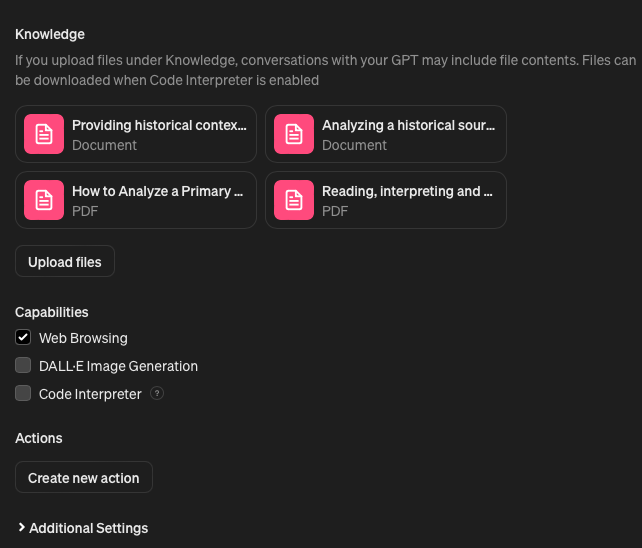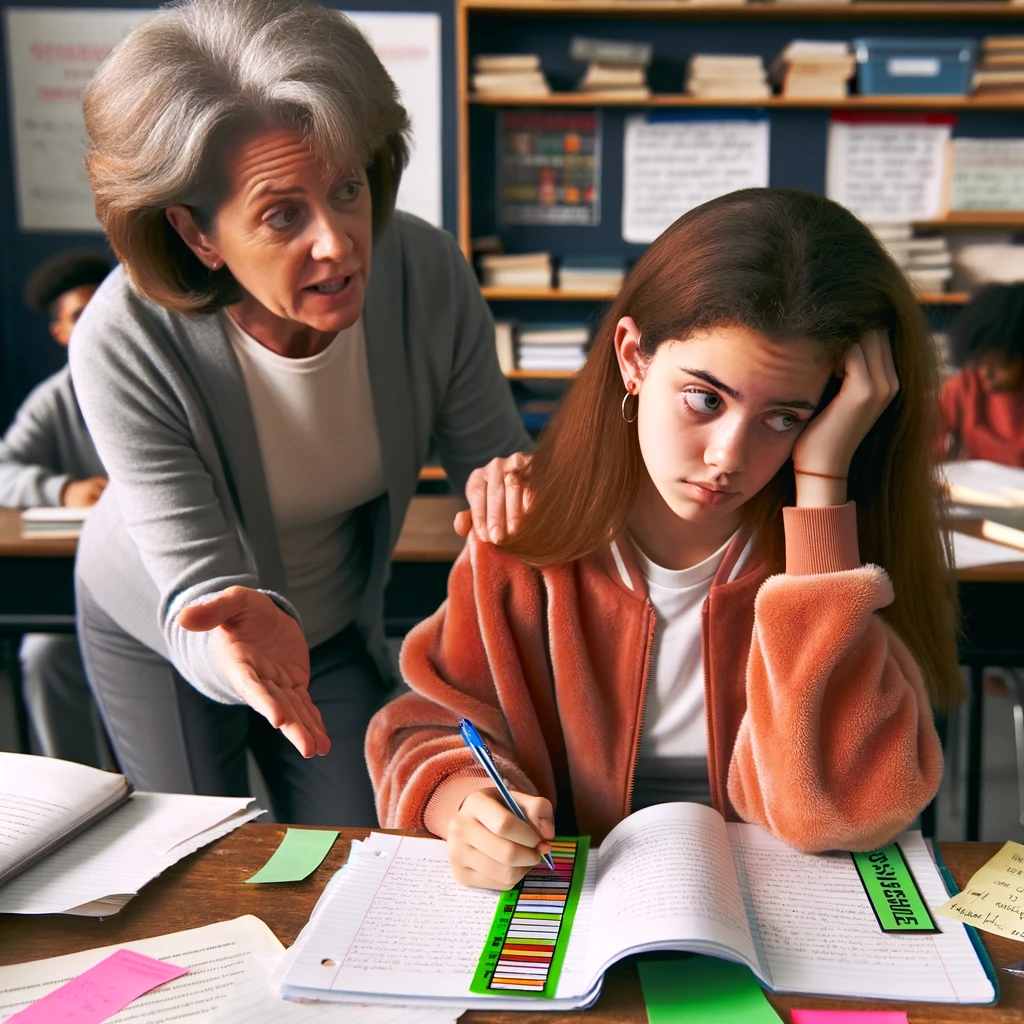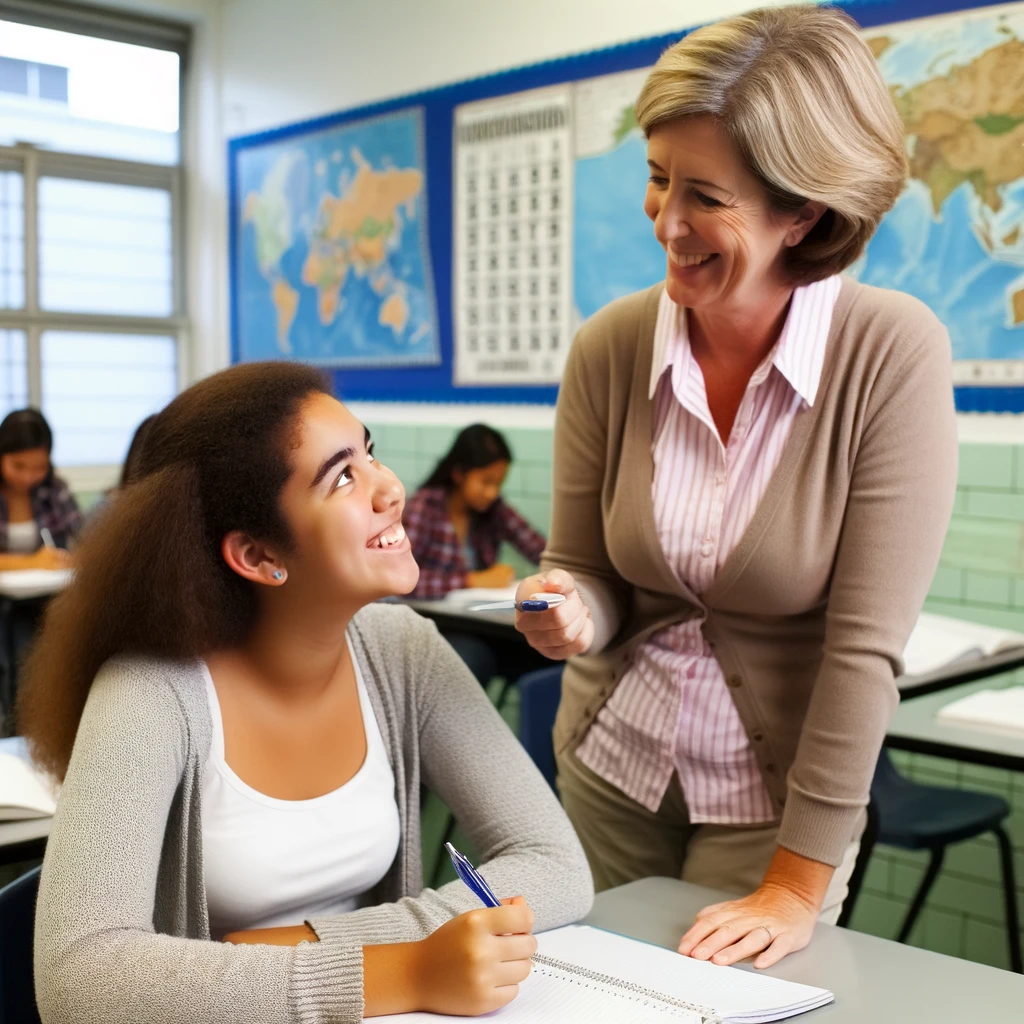Let’s build our own custom ChatGPT Today!
OpenAI has taken innovation further, offering a ground-breaking tool: the GPT builder. This feature is exclusively available to ChatGPT Plus and Enterprise account holders and has replaced the plug-ins introduced in mid-last year. This new feature allows you to customise your very own ChatGPT, tailored to your personal or student’s specific needs, in just minutes. There is an existing library that you can browse, and it’s reasonably easy to build your own, which is what we will explore now.

GPTs are customisable versions of ChatGPT that you designed. Tell the GPT builder what you’re aiming for in plain English and watch as it brings your vision to life. For instance, when tasked with creating a bot that shares historical facts, the builder proposed a unique ChatGPT focused on delivering delightful history trivia.
Building Your Custom ChatGPT is simple;
Displayed here is an example of one designed to answer questions on historical sources as an example for students. It is designed to provide two insight for students. First is providing an example answer for a source and then explaining how to develop that answer.
Step-by-Step Process:
1. Login: Start by logging into your OpenAI account at chat.openai.com.
2. Create: Navigate to “Explore”, then “Create a GPT”. Describe your chatbot’s purpose to the GPT builder.

3. Configure: Customise further by naming your bot, refining its instructions, adding knowledge files, and setting up actions.
Do you need to know coding?
The instructions are written in plain English, with no coding and no algorithms. Step by step, write out what your questions will ask and how they will be answered. It may take you a few iterations to get it right, but anyone can do it. The feature I find the most useful is adding my own dataset, or what it refers to as knowledge. As illustrated in the image, I have uploaded four documents with explanations on how to read and analyse primary sources. (Documents I use in my class). This provides specific knowledge for my GPT to answer the questions. It is still a work in progress as it is learning as people use it, but you can try it out here.


Try out this example source focused GPT.
Now that you have the knowledge to create and customise your ChatGPT, the possibilities are endless. Whether for educational tools or just sharing fun facts about otters, your custom GPT can transform how you interact with the digital world. Custom GPT is a first step in individualise learning for you specific class needs.
Elevate Your Lessons with Exclusive Insights! 🚀
Embark on a journey through time with us and transform your history lessons into a thrilling adventure for your students! If you’ve found value in our guide to teaching, imagine the wealth of resources, tips, and strategies you could explore as a subscriber to our mailing list.
💌 Subscribe to Our Enlightening Educators’ Mailing List Now! 💌
By joining our community, you’ll unlock:
- 🏰 Exclusive lesson plans and teaching resources.
- 🎓 Expert advice and tips on making history engaging and relatable.
- 📘 Early access to our latest guides, eBooks, and educational materials.
- 🎁 Special offers, discounts, and surprises just for our subscriber family.
Let’s create a future where every history lesson is a captivating journey into the past!
👉 SUBSCRIBE NOW 👈 and become a time-traveling educator, crafting lessons that will be remembered for a lifetime!



